Bravure Group
Bridging users interactions.
Role / Process
Discovery and research
UX/Ideation
Design strategy
Design rollout
Developer collaboration
Tools
Figma
Shortcut
Bootstrap
Bravure Group develops and executes strategies that help their partners solve the most complex challenges within collections, debt recovery and insolvency.
Bridge (by Bravure) provides a streamlined way of managing the many hundreds of requests and data transferred between buyers and sellers after sale; including buybacks, requests, and compliance reporting.
My role
As Senior UX/UI Designer for Soda Digital, I led the design of the product through a complete lifecycle, from initial discovery and UX testing through to design execution.

The problem
Imagine running hundreds and hundreds of transactions between multiple buyers and sellers, using a poorly supported and aging third-party product that effectively generates spreadsheets. Millions of dollars worth of transactions costing Bravure in lost administrative hours. While errors were not overly common, their risk for both financial and reputational damage was always present.
Solution
Bravure engaged Soda Digital to design and develop a bespoke platform for creditors and debt buyers to improve the compliance, oversight, and post-sale support.
Creating a self serving platform, creditors and buyers could then execute and manage their many transactions using an easy, intuitive user interface. Bravure could also mediate and view transactions, and intervene where required. Errors and discrepancies would be captured and reported, minimising risks and administrative oversight.
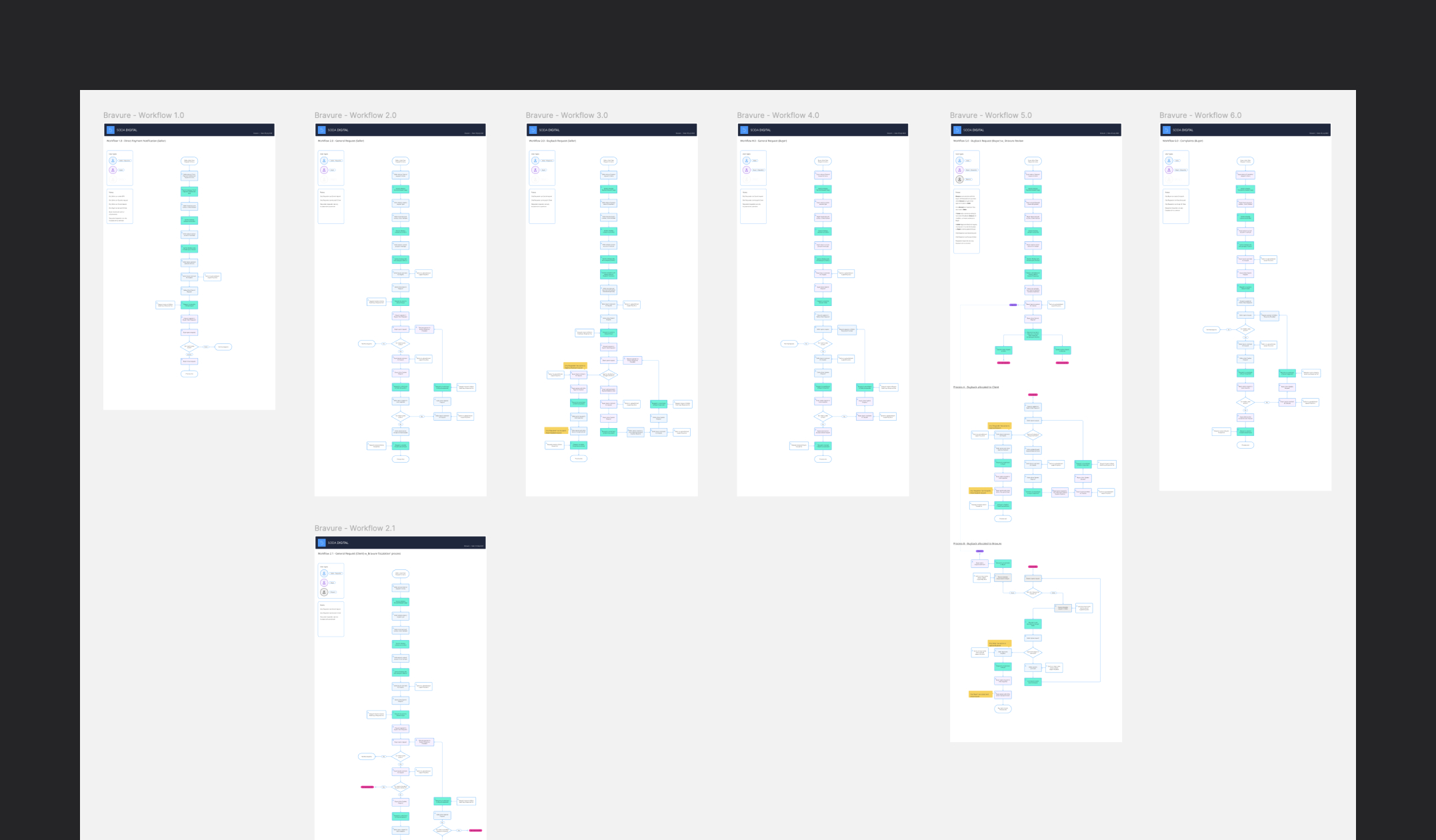
Workflows allowed me to account for multiple screens, templates and features.
Process
Working closely with their team I led research to understand the complexities of these transactions and how different user types, such as creditors and buyers, needed to interact along the way.
By understanding these complexities I was able to model a series of workflows prior to design that explored IF-AND-OR statements to know what steps needed to be accounted for and where potential pain points existed. This planning allowed us to be more agile and flexible in our development, and pivot where required.
Prototype testing
During our research phase (using a double diamond approach) I further tested some of our assumptions using rapid prototypes in Figma. This allowed us to actually see what was happening during the workflow process, and where in our designs we needed to make specific user considerations.

Multiple interactive prototypes used to test assumptions.
Design rollout
Before design could begin, I started by wire-framing the general layout of the platform, using a grid structure that allowed us to see all our pages, pops and modals. Each page was number referenced, which also matched directly with out workflow processes.
Once established, I then introduced a design system/component library template I had previously created. This lean design system allowed me to apply guidelines such as branded fonts and colours as tokens, while the component library allowed me to rapidly populate the pages with reusable components and establish the design patterns required of the platform.
Sprint cycles
Working in 2 week sprint cycles, we regularly touched base with the client to run user acceptance testing (UAT). With the client being happy and confident we could then proceed with the next design and development sprint.
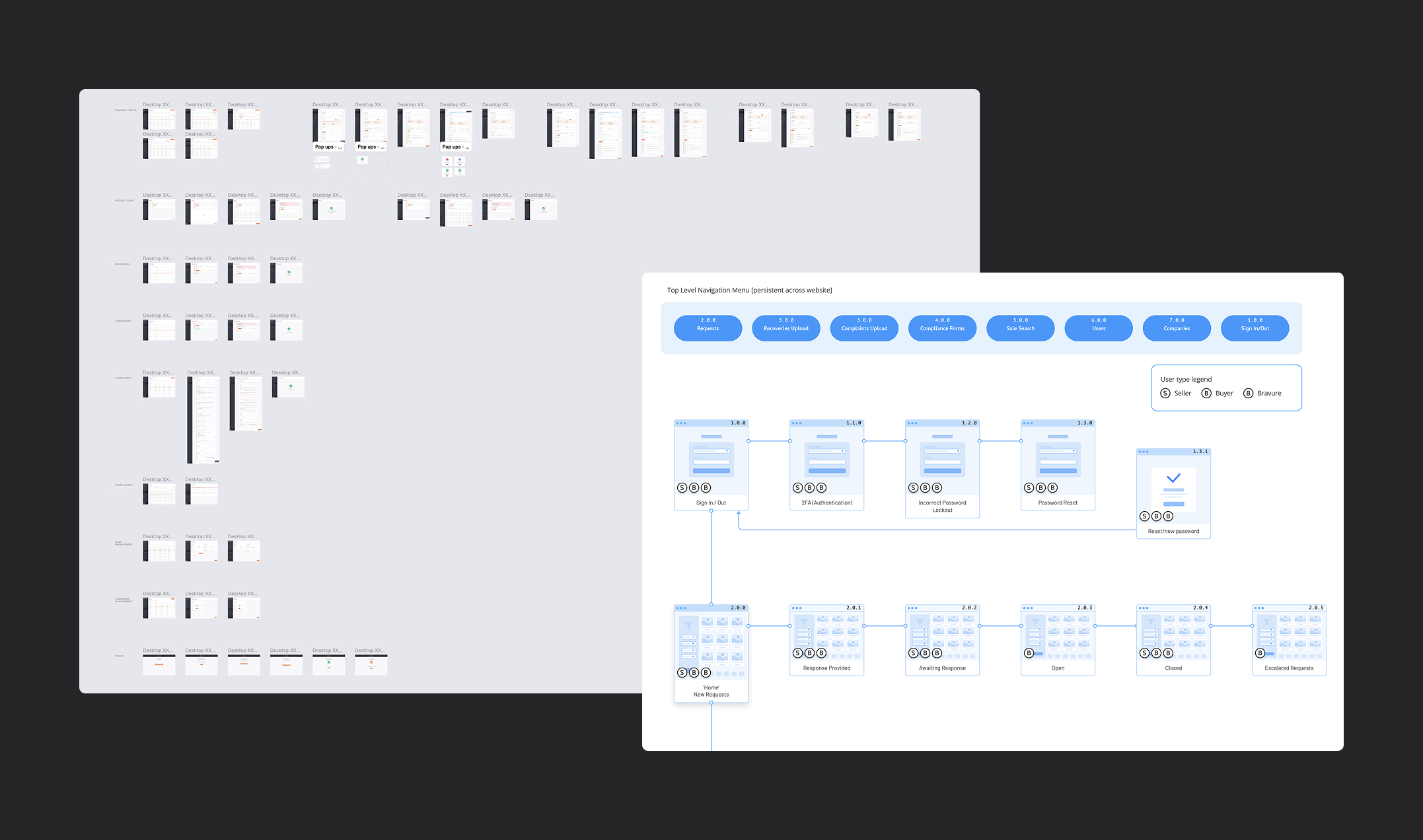
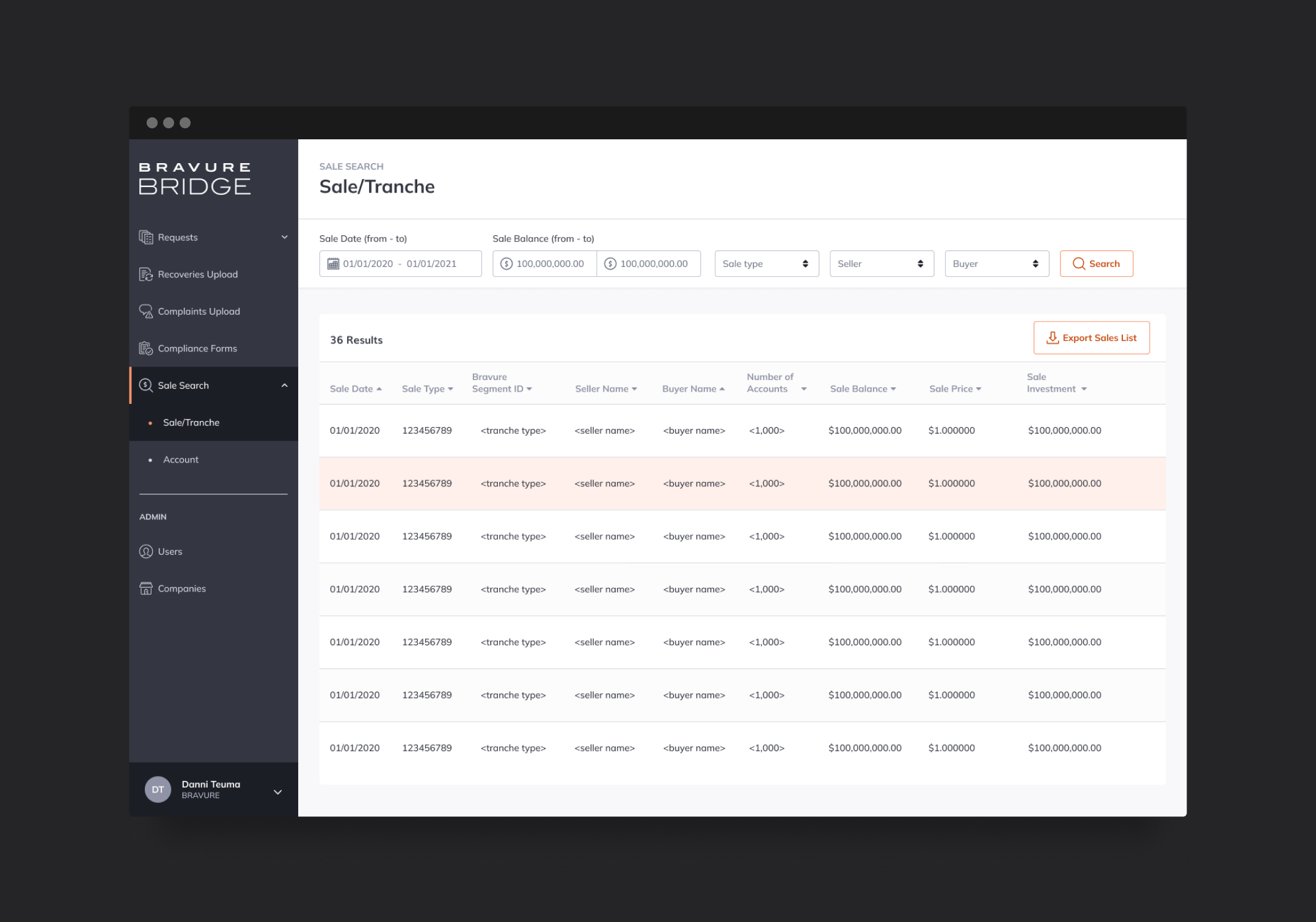
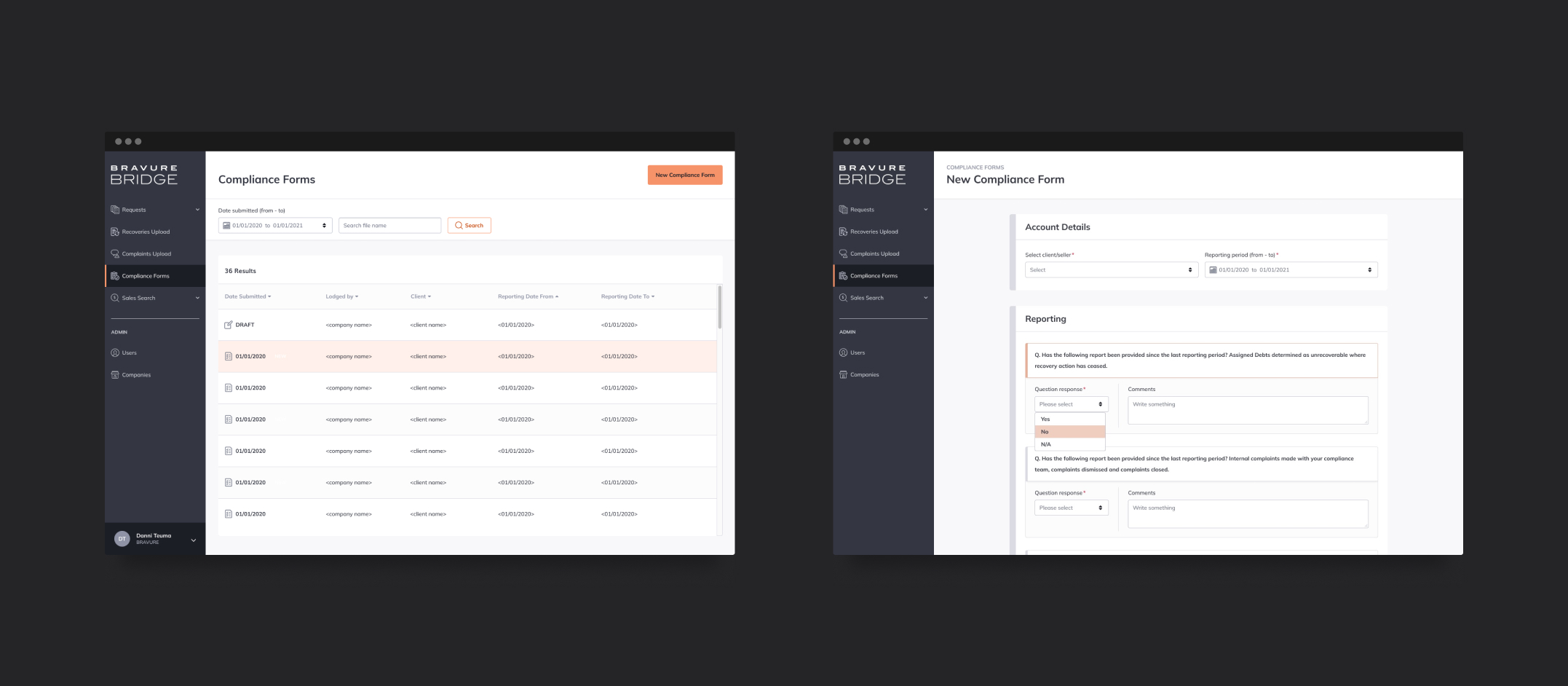
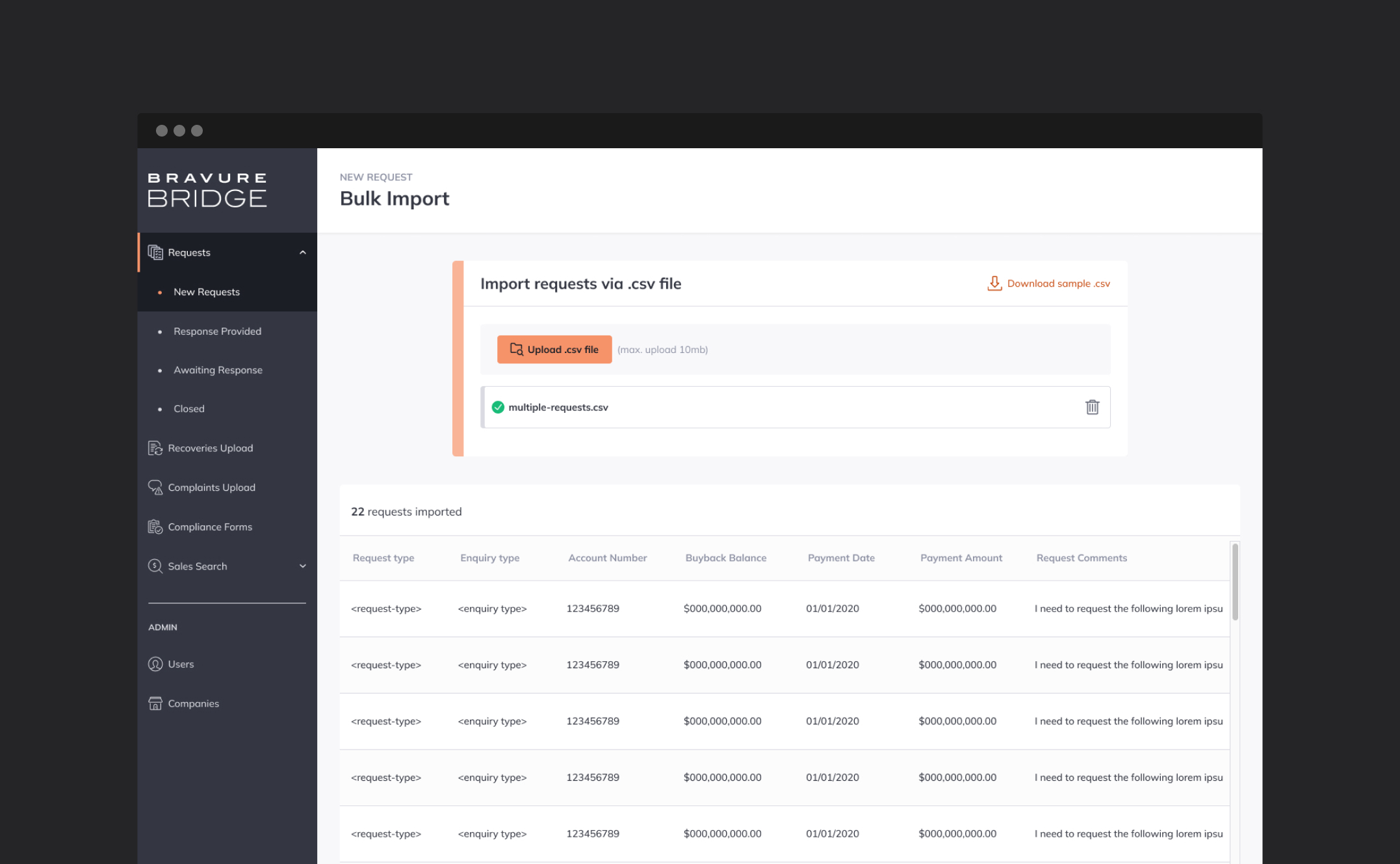
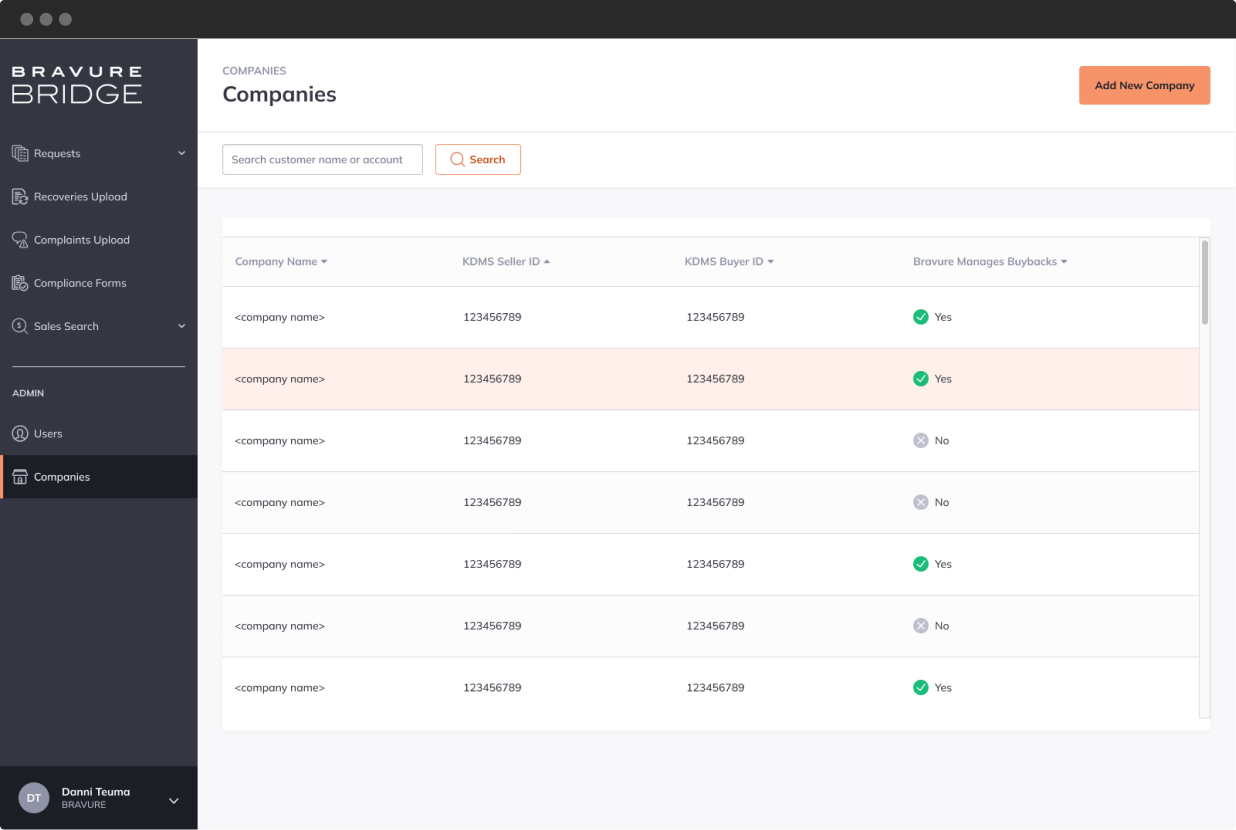

Outcome
After delivery of the product Bravure ran additional testing with a closed cohort of customers. Results from this testing revealed our careful planning, iteration cycles and continual contact with the client had paid off, revealing minimal changes needed to the platform before officially launching.
As a team we were extremely happy at the success of the project and at the clients response of Bridge’s success with it customers.
©Andy Firth | Designer + Creative Thinker. All rights reserved.